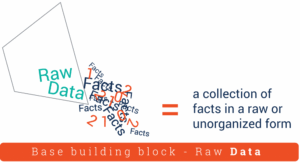The Problem With Data-Driven Everything
The marketing industry’s obsession with big data has created a dangerous blind spot. As a marketing leader, I’ve seen firsthand how a fixation on sheer volume leads to opaque decisions that can’t be justified or trusted. We’re so focused on collecting data that we often forget to build the structures needed to make it useful.
This isn’t a new problem. It’s an industry-wide challenge that requires us to change our approach. I was reminded of this recently when I saw an insightful LinkedIn post from my former lecturer, Ryan Sauer. He wrote, “Everyone talks about big data, but data as a standalone construct is useless to most people.” I couldn’t agree more. What’s truly critical is how we plan to convert that data into information, insights, and actions. Ryan’s point is that we need to learn to walk before we can run.
Many agencies and marketing departments haven’t taken this structural approach because it requires a significant amount of work, effort, and training. However, I believe that if businesses understood their entire marketing operation as a series of data moments, we could create much better solutions for the boardroom. We could show up much better.

Graphic via Graphwise.
The Big Data Blind Spot
The industry has become overly obsessed with the idea that data is a function of performance and a function of digital. We are all moving towards AI, and we want to get to the finish line too quickly. What we don’t realize is that in every moment of media, branding, marketing, and advertising, there are data touchpoints we can intentionally create.
These touchpoints can be anything from how a creative asset is named to a radio spot’s metadata. By consistently tagging and identifying these data points, we can build a cohesive system that enhances marketing effectiveness in the future. As Sauer noted in his post, “Data is useless if you use it in its rawest form.”
This brings me to the marketing clichés we all hear far too often:
- “We have all this data at our fingertips”
- “We live in an age of data overload”
- “Data-driven marketing is driving performance”
These statements, while well-intentioned, miss the point entirely. The issue isn’t a lack of data; it’s a lack of meaningful application.
To get value from AI, marketing leaders first need to trust and understand the data being used in their business. The pyramid of knowledge illustrates this perfectly . It shows how data transforms into wisdom through successive layers of meaning and context. By enriching data with context, we can gain insights that lead to informed and intelligent decisions.
The Opaque ‘Black Box’ of AI
The danger of this small thinking in a big data world is what Ryan Sauer refers to as the ‘black box’ of AI. When we feed data into algorithms without fully understanding how it was collected or stored, AI becomes an opaque system where inputs and outputs are difficult to trace.
We’re already seeing this in advertising with tools like Performance Max (PMAX) that handle performance marketing with little visibility. In North America, digital ad spending is projected to exceed $325 billion in 2025, with a significant portion funneled through AI-driven tools. Too many brands and agencies are accepting this trade-off—performance at any cost—without questioning how their data is being used.
This is a real issue for marketing leaders. If data is unprocessed or lacks context, the outputs are just as opaque and hard to interpret. As leaders, we need to be able to measure, justify, and trust the outcomes of our strategies. We can’t do that if we don’t understand the inputs.
You often hear brands say, “we’re a data-driven business,” but what they’re often describing is using retrospective data to make forward-looking decisions. This is a crucial distinction. True data-driven decision-making means working with historical data, real-time data, and predictive models. It’s about taking a full-spectrum view of the past, present, and future to drive real results.
Ready to move beyond raw data and lead with true marketing intelligence? Contact me today to discuss how we can build a smarter, more effective strategy for your business.
What is the difference between data, information, and insights?
Data is raw, unorganized facts. Information is data with context. Insights are the valuable conclusions drawn from that information, which inform business decisions.
What is the ‘black box’ of AI in marketing?
It refers to AI systems, like certain ad platforms, where the decision-making process is opaque. It’s difficult to understand how the AI uses data to arrive at its outputs, which makes the outcomes hard to trust or justify.
How can I start structuring my company’s data?
Begin by auditing your current data sources. Define what you want to measure and why. Establish clear tagging conventions for all your creative assets and media campaigns. This intentional approach provides the foundation for turning raw data into usable information.
Why is raw data considered useless on its own?
Raw data lacks context and structure. Without a framework to organize and interpret it, raw data has no meaning or purpose, making it impossible to apply to business challenges.
How does a lack of data structure impact marketing leadership?
Without a clear data structure, marketing leaders can’t properly measure performance, justify budgets, or make confident, forward-looking decisions. This limits their ability to lead effectively and prove the value of marketing to the broader organization.
What is the risk of only using retrospective data?
Retrospective data only tells you what happened in the past. While useful, it doesn’t account for real-time changes or future scenarios. Limiting yourself to this data means you are always reacting to yesterday’s performance instead of making predictive, proactive decisions.
